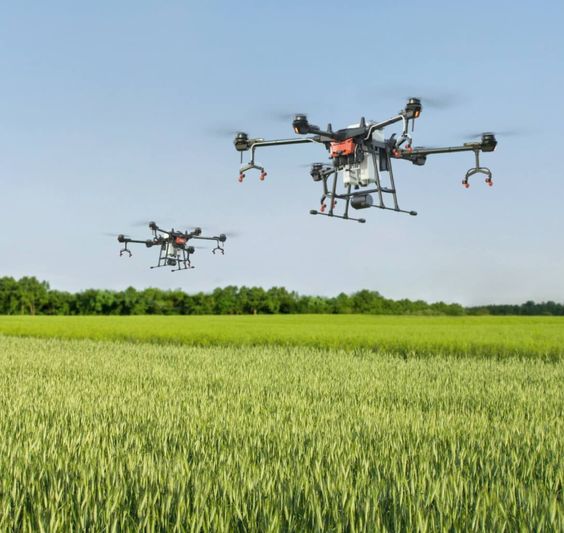Cultivating Collaboration: How Smart Agricultural Cooperatives are Revolutionizing Farming
Smart Agricultural Cooperatives sector is on the cusp of a transformative era. Smart agriculture, with its integration of technology and data-driven practices, is poised to revolutionize the way we grow food. However, implementing these advancements can be a challenge for individual farms, particularly smaller ones. This is where the concept of smart agricultural cooperatives comes in, offering a collaborative and powerful approach to navigating the future of farming.
Contents
- 1 Traditional Cooperatives: A Foundation for Success
- 2 Empowering Innovation: Smart Technologies in Action
- 3 Strength in Numbers: The Cooperative Advantage Smart Agricultural Cooperatives
- 4 Building a Sustainable Future: Beyond Technology
- 5 Conclusion: A Brighter Future for Smart Agricultural Cooperatives
Traditional Cooperatives: A Foundation for Success
Cooperatives are not a new invention in the agricultural landscape. For generations, farmers have joined forces to pool resources, share knowledge, and negotiate better deals for inputs and outputs. These traditional cooperatives have laid a strong foundation for the adoption of smart agriculture practices. Their inherent collaborative structure fosters trust and knowledge exchange, which are crucial for successfully implementing new technologies.
Empowering Innovation: Smart Technologies in Action
Smart agricultural cooperatives leverage a range of technologies to improve efficiency, sustainability, and profitability. Here are some key examples:
- Precision Agriculture: Sensor networks and data analytics allow farmers to monitor soil conditions, moisture levels, and crop health in real-time. This enables them to precisely tailor inputs like water, fertilizer, and pesticides, minimizing waste and maximizing yields.
- Internet of Things (IoT): A network of interconnected devices collects data from fields, equipment, and weather stations. This data can be used to optimize irrigation systems, automate tasks, and monitor crop health remotely.
- Artificial Intelligence (AI) and Machine Learning (ML): AI algorithms can analyze vast datasets to identify patterns, predict crop yields, and detect potential diseases or pest infestations. This allows farmers to make informed decisions and proactively address challenges.
Strength in Numbers: The Cooperative Advantage Smart Agricultural Cooperatives
Smart agricultural cooperatives unlock several advantages for their members:
- Shared Investment Smart Agricultural Cooperatives: The cooperative model allows farmers to collectively invest in expensive technologies like precision agriculture sensors and weather stations, making them accessible even for smaller farms.
- Knowledge Sharing and Training: Experienced members can share their expertise and knowledge with newer farmers, accelerating the adoption of smart practices. Additionally, cooperatives can organize training programs to equip members with the skills needed to utilize new technologies effectively.
- Data Aggregation and Insights: By pooling data from individual farms, cooperatives can generate valuable insights into regional trends, crop performance, and market dynamics. This empowers farmers to make informed decisions about planting schedules, resource allocation, and marketing strategies.
- Improved Market Access: Cooperatives can leverage their collective bargaining power to negotiate better deals with input suppliers and buyers. They can also explore new marketing channels, such as direct-to-consumer sales or partnerships with local retailers.
Building a Sustainable Future: Beyond Technology
While technology plays a critical role, the success of smart agricultural cooperatives hinges on more than just implementing hardware and software. Here are some additional factors to consider:
- Social Sustainability: Cooperatives need to foster a strong sense of community and shared purpose among members. This can be achieved through regular communication, joint workshops, and knowledge-sharing initiatives.
- Environmental Sustainability: Technology can be harnessed to promote sustainable practices, such as reducing water usage and minimizing pesticide use through targeted measures.
- Economic Sustainability: Financial viability is essential for the long-term success of the cooperative. This requires establishing a fair and transparent system for profit sharing among members, as well as securing access to funding for ongoing innovation.
Conclusion: A Brighter Future for Smart Agricultural Cooperatives
Smart agricultural cooperatives have the potential to unlock a new era of prosperity and sustainability for the agricultural sector. By combining traditional cooperative strengths with cutting-edge technologies, these collaborative ventures can empower farmers to overcome challenges, improve resource management, and ensure the long-term viability of their operations. As we move forward, fostering collaboration and knowledge exchange will be crucial to ensure that the benefits of smart agriculture are available to all farmers, regardless of their size or resources. By embracing this collaborative approach, we can cultivate a brighter future for agriculture, ensuring food security and environmental well-being for generations to come.




